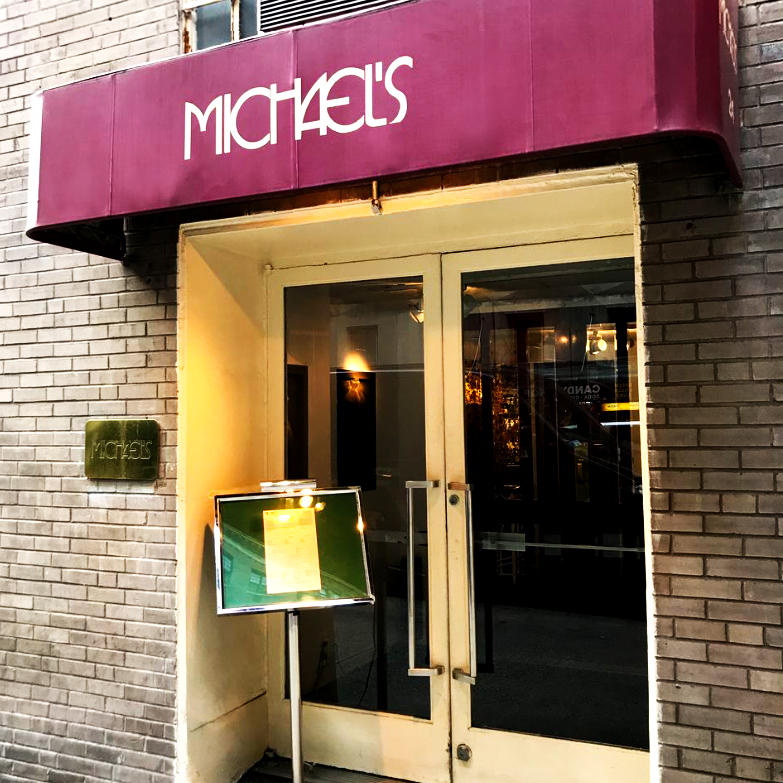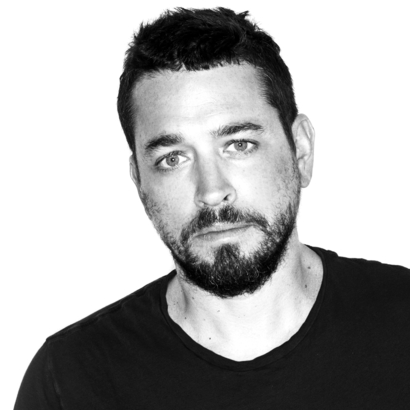Progress requires sacrifice. As a result, the forward march of technological innovation has left many casualties: landlines, video stores, paper maps, civil discourse, facts. Words and phrases have become acronyms, and emojis have replaced emotions. Doing something “in real life” has become such a novelty, a remarkable event, that we had to create an acronym for it. WTF?
Then along came the coronavirus. Suddenly, it became almost impossible to do anything IRL. The pandemic is now over (I think). But in just a few years it killed almost three million people worldwide. It also killed a number of social constructs and customs. One of those things is the power lunch.

“Power lunch” was first coined by an editor at Esquire in 1979, when magazines had the ability to create Zeitgeist-defining phrases. It was used to describe the lunchtime scene at the Four Seasons in the Seagram Building, in Midtown Manhattan. Four years earlier Esquire had run Truman Capote’s “La Côte Basque 1965,” a short story about what would soon be called a power lunch that would later figure prominently in Ryan Murphy’s Feud: Capote vs. the Swans.
And while the term may have been coined in New York, about a New York restaurant, there is, or perhaps was, a power lunch in almost every city or town around the world for as long as there have been powerful people with a midday appetite.
The power lunch was never about eating, though; it was about being seen, staying relevant, holding on to or building on whatever kind of power or influence you have, or think you have, whether that’s financial, political, social, or cultural. It was about business, optics, gossip, social standing. It was about having a literal and metaphorical “seat at the table.”

But the media power lunch always towered over the rest. The crowd had better clothes, bigger personalities, a higher tolerance for alcohol, more creative and interesting work, and a higher proportion of women, balancing out the gender makeup of the dining room. Every big media center had a media power lunch, but nobody did it quite like New York, the media center of the universe.
In the middle of the day, especially in the late 1980s and 1990s, when business was booming, the media elite ditched their desks en masse, with the precision and predictability of the Flintstones’ opening sequence, got into their idling Lincoln Town Cars, and were driven three or four blocks to a few specific restaurants to power-lunch, which might as well have been a verb during this era.
The power lunch was never about eating. It was about having a literal and metaphorical “seat at the table.”
There were really only three options, all located in Midtown: the Four Seasons, Philip Johnson’s midcentury masterpiece; the Royalton hotel’s flashier 44, whimsically designed by Philippe Starck and run by the well-connected English restaurateur Brian McNally; and Michael’s, the least flamboyant of the three, tucked under a nondescript apartment building on West 55th Street.
The media power lunch was fading well before the pandemic, as takeout and delivery options improved and the working lunch took hold, while the media business became more dispersed. The Internet and the Great Recession led to a contraction in legacy-media-advertising spending. Expense accounts began to wither and die, and the business has been on a downward trajectory ever since. In 2023, more than 20,000 American media jobs disappeared. This year may be even worse.
A Few Hokas, but Zero Yeezys
Michael’s, the sole survivor of the big three media-power-lunch spots, is a restaurant frozen in time. That can be a selling point, as was the case with the magnificent Four Seasons, but not if that time happens to be 1989, when Michael’s was opened by the California restaurateur Michael McCarty. (The original Michael’s is in Santa Monica.) And there is still more than a fragrant whiff of the 80s here: the wall-to-wall carpeting, the dusty track lighting, the mirrored column in the center of the dining room, the worn Breuer chairs.

What’s not frozen in time, which is unfortunate for a restaurant that relies on media expense accounts, is the media industry. So I was surprised that Michael’s began filling up at around 12:30 p.m. on a cold Thursday in February. One after another, parties of two and four were led to their tables, mostly older gentlemen in suits with open-collared shirts, like it’s 1998 and “business casual” still means simply losing the tie. Although most of them had replaced their wing tips or loafers with sneakers. I saw a few pairs of Skechers, a few Hokas. By one p.m., the place was packed. It was like the dinner rush for the early-bird special in an assisted-living community.
For years, the New York Post’s media columnist Keith Kelly would often detail the boldfaced power lunchers at Michael’s in his “Media Ink” column, sometimes even including a seating chart. Kelly retired in 2021, so the restaurant now tweets a daily list of their boldfaced lunch guests (#INTHEHOUSE) to their 2,800 followers.
Scrolling back, there were repeat visits by familiar faces, such as P.R. veteran Peggy Siegal, adman turned Joe Scarborough sidekick Donny Deutsch, gadfly Michael Wolff, former Time Inc. head Norm Pearlstine, and literary agent Lynn Nesbit. Tina Brown, Jeff Zucker, Michael Kors, David Axelrod, New Jersey governor Phil Murphy, Malcolm Gladwell, Anthony Scaramucci, and Rex Reed have all made recent appearances at Michael’s, too. The only semi-notable person I recognized when I went—and it took me a minute to place her—was former Vogue staffer and Melania Trump memoirist Stephanie Winston Wolkoff.

Time hasn’t been kind to the quality of Michael’s food. It ranges from just O.K. to not very good to whoa. In fact, the less said about the food, the better. I know, the power lunch isn’t about the food, but at these prices, it needs to be improved. A piece of salmon is $44; an eight-ounce filet mignon, $58. The burger ($38), the Cobb salad ($35), and the Niçoise ($36), while all pricey, are probably the safest bets on the menu.
My $40 branzino consisted of two limp fillets that were so thin the fish must have been on Ozempic. A $16 side dish of gray, gloppy mushrooms tasted like it was straight from a can. A number of plates had that unmistakable look of food that had been sitting under a heat lamp for 20 minutes—its garnishes wilted and depressed, looking sadder than photographs of 1970s England—and yet the dishes arrived so quickly it’s impossible they had been. I’m afraid that when it comes to the food, Michael’s has simply stopped trying. Which is a shame, because I remember it being better than this.
And yet there’s something nostalgically charming about the place. The room is comfortable and bright, lined with some really wonderful art, including pieces by Jasper Johns, David Hockney, and Frank Stella. The tables are spaced a reasonable distance apart. There was a communal understanding that we should use our inside voices. There were no tables of young people living their truth, or their best life, or some combination of those two empty promises, which seems to include being exceedingly loud in restaurants.
By one p.m., the place was packed. It was like the dinner rush for the early-bird special in an assisted-living community.
At Michael’s, you can have a conversation without having to lean in to hear what your dining partner is saying, and there are fewer and fewer restaurants I can say that about. Even the Kenny G–style smooth jazz playing quietly was refreshing. In an increasingly chaotic and fraught world, for almost $200 with the tip and a little more than an hour of my day, Michael’s brought me back to a better time, a simpler time. It gave me some comfort about my own mortality, and made me feel, however fleetingly, that maybe, just maybe, everything was going to be O.K. You can’t really put a price on that.
Sure, its lunchtime crowd resembles a casting call for a reboot of Cocoon. But no one was wearing Yeezys or Lululemon. There were no influencers or reality-television “stars.” No one was staring at their phone. No one was taking pictures of their food. People were simply talking to each other—the ultimate throwback.

There was a restaurant in Japan called the Restaurant of Mistaken Orders. Its waitstaff all suffered from dementia or Alzheimer’s, so what you were served might not be what you ordered; hence the name. The intention was to allow people suffering from those scourges of old age to get out of the house, engage with the world, and have a sense of agency and purpose.
At Michael’s, it’s the diners who are offered a sense of agency and purpose in a world that has left them behind. For an hour or two, they can make believe it’s still the waning days of the 20th century, the media business is thriving, and the future looks bright. It’s a wonderfully empathetic and humanistic concept, playing out every day over lunch at Michael’s, IRL.
Dana Brown is a Columnist at Air Mail. A former deputy editor at Vanity Fair, he is the author of the memoir Dilettante: True Tales of Excess, Triumph, and Disaster


